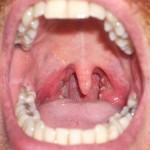For some people antibiotics are the cure all medicine and one of the best gifts from god, for others they feel they are responsible for everything that is wrong with western medicine and yet the majority of people are somewhere in between these two extremes. We decided to separate fact from fiction and give you some alternatives to antibiotics if you are concerned about their over use! We will do a 6 part series. The first part will provide some facts as they are presented by the Mayo Clinic website. Part 2 will provide alternatives in the event you have strep throat. Part 3 will cover alternatives to antibiotics if you have a sinus infection. Part 4 will give you some natural remedies for urinary tract infections. Part 5 will provide antibiotic alternatives for an ear infection and finally part 6 will cover bronchitis!
 Antibiotics – Good and Bad
Antibiotics – Good and Bad
Your head throbs, your nose is stuffy, and you’re too tired to do anything but flop into bed at the end of the day. You’re probably coming down with a cold or the flu. But if you think that antibiotics will help you feel better, think again. Antibiotics won’t do a thing for viral illnesses such as colds, flu and most sore throats. What’s more, taking antibiotics when you don’t need them actually can be harmful. Here’s more information on what antibiotics are, when they should and shouldn’t be used, and what you can do to combat antibiotic resistance.
What are antibiotics?
Antibiotics are powerful drugs used for treating many serious and life-threatening infectious diseases, but taking them when you don’t need to can lead to antibiotic-resistant germs. Antibiotics are only effective against bacterial infections, certain fungal infections and some kinds of parasites. Most infections result from either bacteria or viruses. Antibiotics can’t help you if a virus is responsible for your illness.
Bacterial infections cause:
* Some ear infections
* Severe sinus infections
* Strep throat
* Urinary tract infections
* Many wound and skin infections
Viral infections cause:
* Most ear infections
* Colds
* Influenza (flu)
* Most coughs
* Most sore throats
* Bronchitis
* Stomach flu (viral gastroenteritis)
How antibiotic resistance develops
Since penicillin was introduced in the 1940s, scientists have developed more than 150 antibiotics to help stop the spread of infectious disease. But although these drugs have saved millions of lives, the misuse of antibiotics has caused problems. Their frequent use, often for conditions or infections that aren’t caused by bacteria, has given rise to bacteria that are resistant to many commonly used antibiotics.
Superbugs emerge when an antibiotic fails to kill all of the bacteria it targets, and the surviving bacteria become resistant to that particular drug and frequently other antibiotics as well. Doctors then prescribe a stronger antibiotic, but the bacteria quickly learn to withstand the more potent drug as well, perpetuating a cycle in which increasingly powerful drugs are required to treat infections.
Antibiotic-resistant strains of bacteria began to appear soon after penicillin was introduced. Today, antibiotic-resistant strains have become common, and bacteria resistant to a number of antibiotics have developed. Once only seen in hospitals, outbreaks of some resistant strains — such as methicillin-resistant Staphylococcus aureus (MRSA) — are appearing in the wider community.
For years, the potent antibiotic vancomycin (Vancocin) was a reliable last defense against certain severe infections, notably those caused by staphylococcus bacteria. But in recent years, some superbugs have become able to resist vancomycin.
While experts are working to develop new antibiotics and other treatments to keep pace with antibiotic-resistant strains of bacteria, infectious organisms adapt quickly. Antibiotic-resistant bacteria will continue to be a global health concern — and using antibiotics wisely is an important part of preventing their spread.
Consequences of antibiotic resistance
When more and more bacteria become resistant to first line treatments, the consequences are severe. Illnesses last longer, and the risk of complications and death increases. In the United States alone, thousands of people die each year of infections they contract in the hospital from antibiotic-resistant bacteria. The inability to treat a particular infection leads to longer periods in which a person is contagious and able to spread the resistant strains to others.
The failure of first line treatments also means that doctors have to resort to less-conventional medications, many of which are much more costly and more toxic than common drugs are. For instance, the drugs needed to treat multidrug-resistant forms of tuberculosis (TB) are much more expensive than are the drugs used to treat nonresistant TB. The course of treatment is long — up to two years — and the side effects can be severe.
Other consequences are the increased costs associated with prolonged illnesses, including the direct expense for additional laboratory tests, treatments and hospitalization, and the indirect costs from loss of income or time away from family.
Safeguard effective antibiotics: What you can do
Using antibiotics too often or incorrectly is a major cause of the increase in resistant bacteria. Here are some things you can do to promote proper use of antibiotics:
* Understand when antibiotics should be used. Don’t expect to take antibiotics every time you’re sick. Antibiotics are effective in treating most bacterial infections, but they’re not useful against viral infections, such as colds, acute bronchitis, or the flu. And even some common bacterial ailments, such as mild ear infections, don’t benefit much from antibiotics.
* Don’t pressure your doctor for antibiotics if you have a viral illness. Instead, talk with your doctor about ways to relieve the symptoms of your viral illness — a saline nasal spray to clear a stuffy nose, for instance, or a mixture of warm water, lemon and honey to temporarily soothe a sore throat.
* Take antibiotics exactly as prescribed. Follow your doctor’s instructions when taking prescribed medication, including how many times a day and for how long. Never stop treatment a few days early if you start feeling better — a complete course of antibiotics is needed to kill all of the harmful bacteria. A shortened course of antibiotics, on the other hand, often wipes out only the most vulnerable bacteria, while allowing relatively resistant bacteria to survive.
* Never take antibiotics without a prescription. If you didn’t complete a full course of antibiotics, you might be tempted to use the leftover medication the next time you get sick or to pass it along to someone else. But this isn’t a good idea. For one thing, the antibiotic might not be appropriate for a future illness. And even if it is, you’re not likely to have enough pills to combat the germs making you sick, which can lead to more resistant bacteria.
* Protect yourself from infection in the first place. Good hygiene can go a long way in preventing infection. Wash your hands thoroughly with soap and water, especially after using the toilet, changing a diaper or handling raw meat or poultry. Keep food preparation areas clean. Although antibacterial cleaners and soap are widely available, they aren’t necessary. Plain soap and water works fine to kill germs in most settings.
What about antibiotic in our food?
The volume of antibiotics used to treat human illness pales in comparison to the volume used in industrial farm animal production. In 2005, the Union of Concerned Scientists noted that while 3 million pounds of antibiotics were being used in human medicine each year, the food animal industry was using 24.6 million pounds, primarily to stimulate growth and increase production. These are some staggering numbers that should really concern all of us. So, if you are concerned, 100% organic foods will be a good alternative. Please visit a very interesting website at www.ThatsSuperFood.com and read the article “So What Does “ORGANIC” Really Mean?”. Very interesting information!





